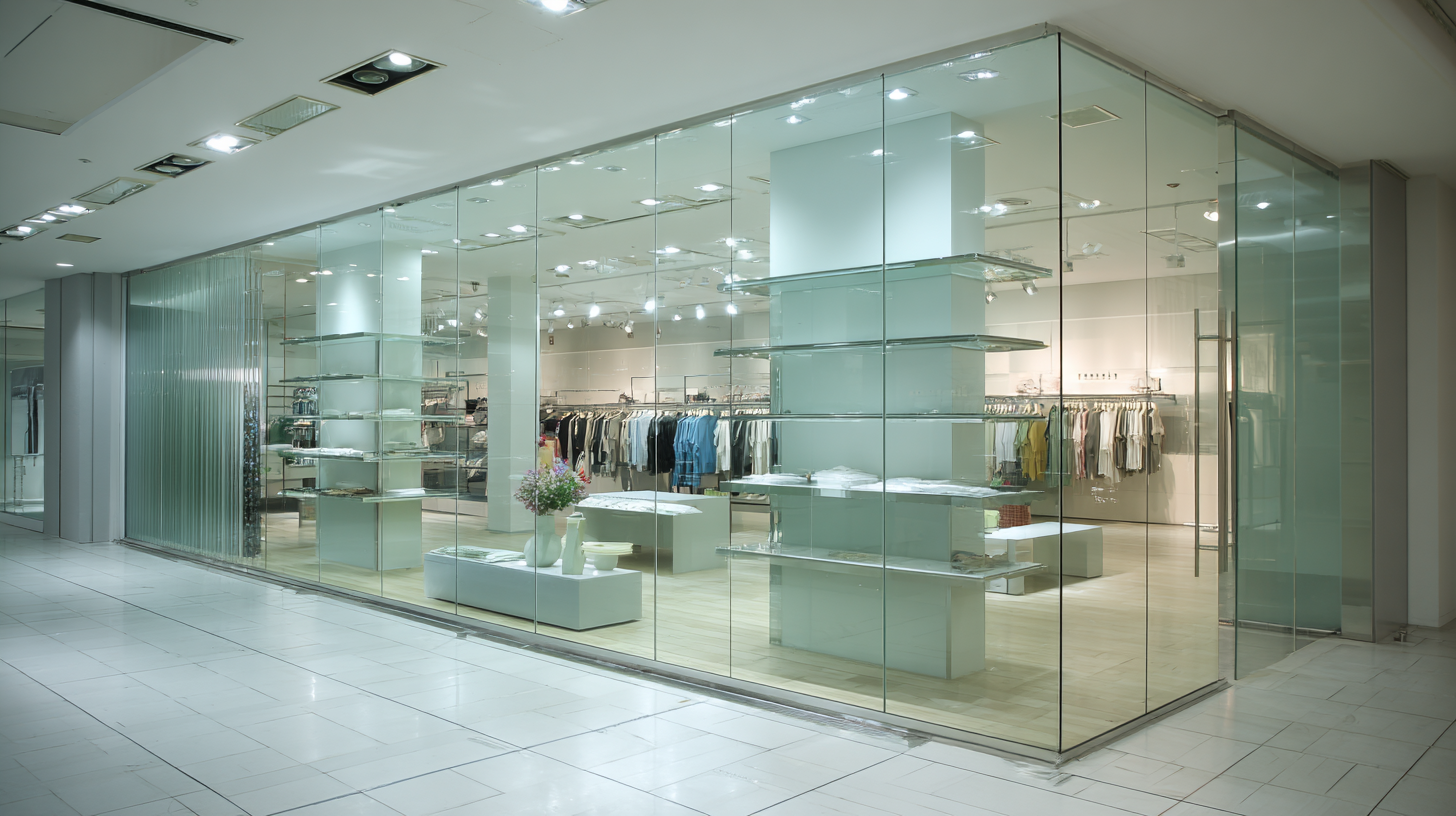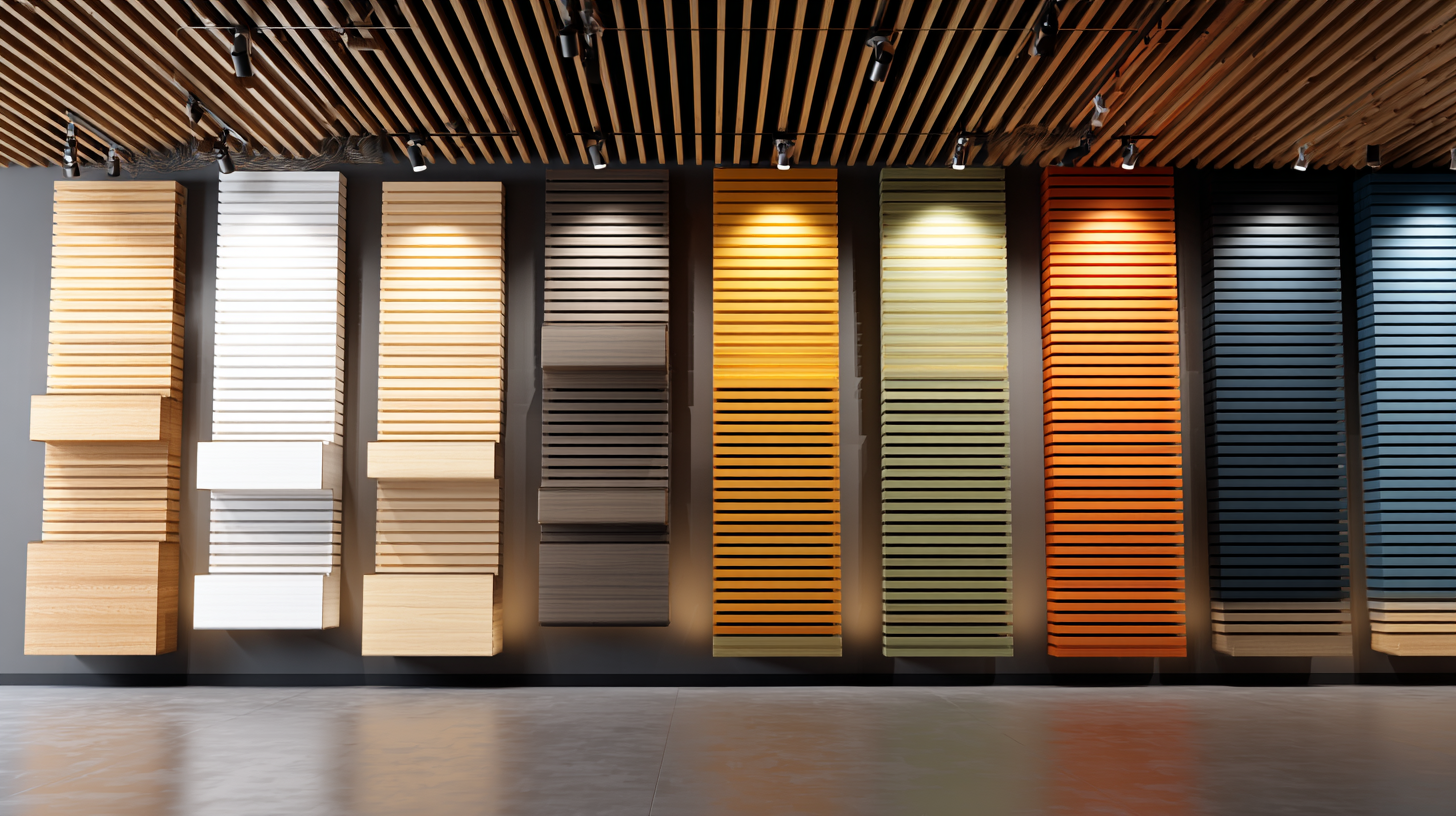As retail environments continue to evolve, the choice of display solutions becomes increasingly crucial for enhancing product visibility and customer engagement. One standout option that has gained traction in recent years is the Slat Wall Panel, which offers versatility and adaptability for various retail spaces. According to a recent report by IBISWorld, the retail display industry has seen a significant growth rate of 3.3% annually, driven largely by innovations in display fixtures like Slat Wall Panels. These panels not only provide a refined aesthetic but also maximize wall space, allowing retailers to arrange merchandise effectively. With a multitude of materials, colors, and configurations available, selecting the right Slat Wall Panel can greatly influence the overall shopping experience, making it essential for retailers to understand their options and investment implications in the competitive marketplace.

The slat wall panel market is experiencing significant growth, reflecting the evolving demands of retail spaces. As brands focus on creating versatile and engaging shopping environments, slat wall panels have become a focal point due to their adaptability and aesthetic appeal. Industry trends indicate an increasing preference for sustainable materials, with manufacturers seeking eco-friendly options that do not compromise on design or durability. By 2025, it is projected that the integration of smart technologies into slat wall systems will further enhance the consumer experience, allowing for interactive displays and customized merchandising options.

Additionally, the demographics of retail consumers are shifting, prompting retailers to rethink their spatial strategies. As younger generations prioritize experiences over mere transactions, the functionality of slat wall panels for maximizing space and facilitating product visibility is paramount. The ability to reconfigure these panels swiftly caters to the need for regular updates in product displays, aligning with seasonal trends or promotional events. This flexibility is crucial for retailers looking to maintain a modern and dynamic storefront that captures the attention of a diverse customer base.
When selecting slat wall panels for your retail space, there are several key features to consider to ensure you make the best choice. First, assess the material and durability of the panels. High-quality materials, such as MDF or plywood, provide a sturdy foundation that can withstand the wear and tear of daily use. Additionally, check for finishes that are resistant to scratches and moisture, as this can prolong the life of your panels and maintain a polished look.
Another important consideration is the versatility of the slat wall system. Look for panels that offer a wide range of accessories, such as hooks, shelves, and display bins. This allows you to customize your merchandising strategy, adapting displays to suit seasonal promotions or new inventory. Furthermore, consider the size and layout of your retail space. Opt for slat wall panels that maximize vertical space while complementing your store’s aesthetic, ensuring that both functionality and design are aligned. By focusing on these key features, you can enhance your retail environment effectively.
When it comes to selecting the ideal slat wall panel for your retail space, the choice of material can significantly impact both aesthetics and functionality. Wood, metal, and plastic are the three primary options available, each with its distinct advantages. According to a recent industry report by IBISWorld, the retail display market, which includes slat wall panels, is projected to grow at an annual rate of 3.5% over the next five years, emphasizing the importance of choosing the right materials for long-lasting appeal.
Wood slat wall panels provide a classic and warm aesthetic, making them ideal for boutique stores and high-end retail environments. They offer versatility in terms of design and can easily be customized with finishes to enhance the overall look of the store. However, they may require more maintenance compared to other materials. Metal panels, on the other hand, are known for their durability and modern appearance. A study by Grand View Research highlights that the demand for metal slat walls is increasing, driven by their robustness and ability to support heavier merchandise without bending or warping. Lastly, plastic slat wall panels are lightweight, cost-effective, and resistant to moisture, making them suitable for environments like grocery stores or outdoor markets, as noted by the National Retail Federation.
Each material brings unique benefits that cater to different retail needs. By considering factors like maintenance, aesthetic appeal, and durability, retailers can make informed decisions that not only enhance their space but also contribute to customer experience and sales growth.
| Material Type | Durability | Weight Capacity | Cost | Aesthetic Appeal | Maintenance |
|---|---|---|---|---|---|
| Wood | Moderate | High | $$ | Classic, Warm | Requires periodic sealing |
| Metal | High | Very High | $$$ | Modern, Sleek | Easy to clean, rust-resistant |
| Plastic | Low | Moderate | $ | Versatile, Colorful | Low maintenance, but can fade |
The aesthetic design of your retail space plays a crucial role in shaping customer experience and influencing sales performance. When it comes to slat wall panels, their visual appeal can significantly enhance the overall environment of your store. A well-designed slat wall not only serves as an effective display solution but also creates a cohesive branding experience that resonates with your target audience. Choosing colors, finishes, and configurations that align with your brand identity can draw customers in, making them feel more connected to your products.
Moreover, the arrangement and style of slat wall panels contribute to the flow of the retail space. Strategically positioned, these panels can direct customer movement and highlight key products, enticing shoppers to engage with your offerings. A visually appealing setup encourages customers to explore more, potentially leading to increased sales. In essence, a thoughtfully designed slat wall panel can elevate the shopping environment, fostering emotional connections and enhancing the likelihood of purchases. Implementing aesthetic principles in your display strategy not only beautifies your retail space but can also drive tangible improvements in sales performance.
When it comes to enhancing the retail experience, utilizing slat wall panels can significantly increase your space efficiency. These versatile fixtures not only allow for organized product displays but also give you the flexibility to adapt to seasonal changes or promotional events. Here are some top tips for maximizing space utilization in your retail store with slat wall panels.
First, consider the layout of your space. Position slat wall panels in high-traffic areas to draw customers’ attention to featured products. Using shallow shelves and hooks can help showcase more items without overwhelming the visual space. Additionally, strategically placing panels at varying heights will create a dynamic display that encourages exploration and interaction.
Another effective tip is to use modular accessories that can be easily reconfigured. This allows you to rearrange your displays according to inventory changes or sales events quickly. Additionally, incorporating lighting on or around the slat wall can help highlight key products, making them more appealing to customers. By creatively utilizing slat wall panels, you can transform your retail space into a functional and inviting environment.

